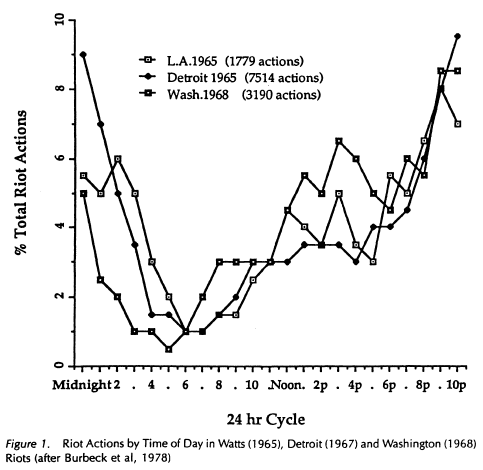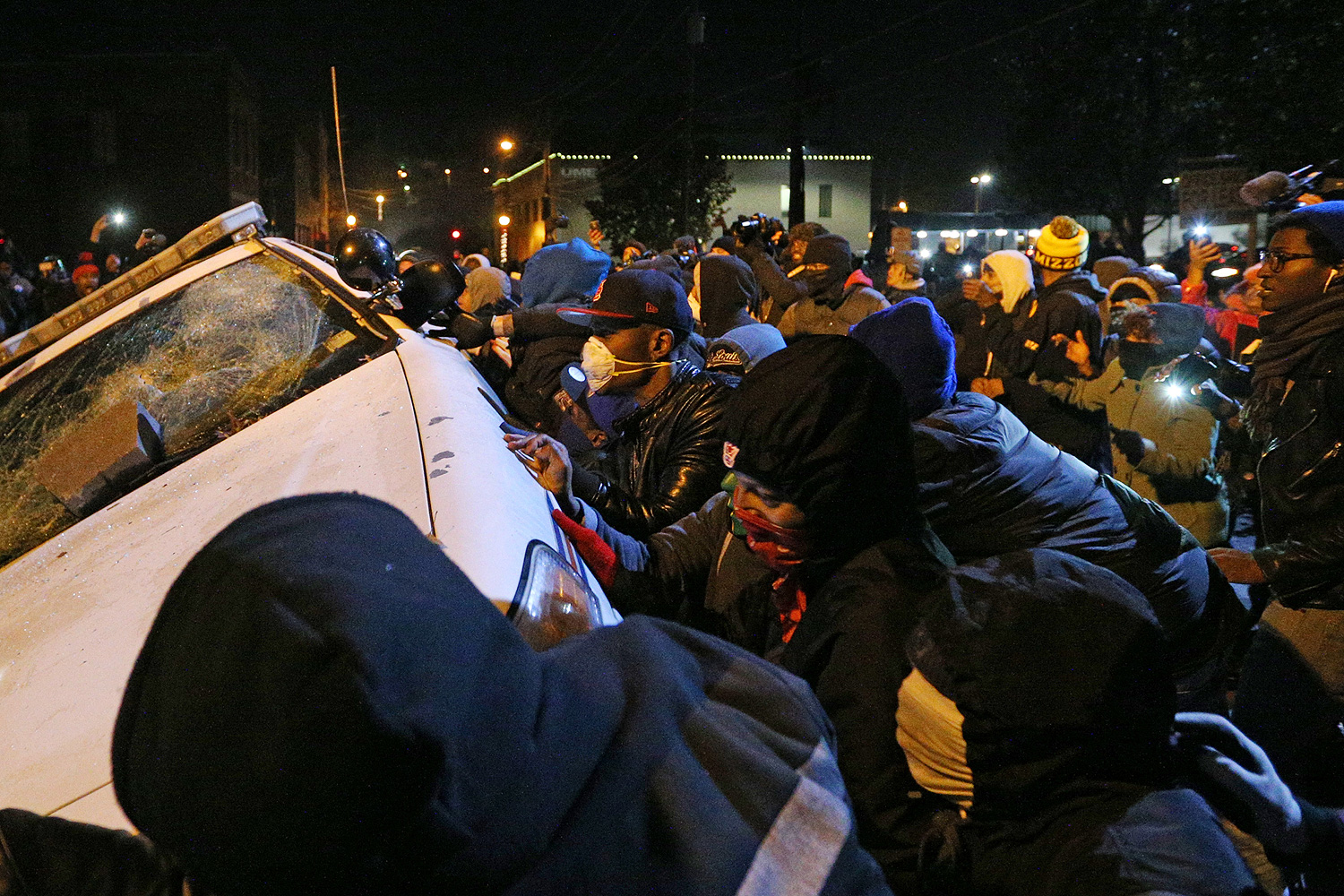One of the many unanswered questions in the grand-jury investigation of Darren Wilson's shooting of Michael Brown in Ferguson is external to the grand jury itself: the decision of the St. Louis County prosecutor's office to announce the decision after dark, at 8 p.m. The most charitable explanations are that it was intended to prevent interference with commuting, work, and school, or to limit the period in which violent protests could form; many less charitable explanations have been offered.
Intuition of when riots occur led many to question the timing of the announcement. History should, too. One of the preeminent students of riot dynamics is Clark McPhail, a professor emeritus at the University of Illinois and author of The Myth of the Madding Crowd, a longform study of crowd psychology.
In 1994, three years after McPhail published that work, he looked specifically at riots in "The Dark Side of Purpose: Individual and Collective Violence in Riots." While McPhail, in the paper, his book, and his career, has challenged many of the assumptions about riots, one perception remains standing: they're way worse at night.
And 8 p.m., by McPhail's calculations, is pretty much when riots, judging by three famous ones, really move towards their peak:

One explanation for this is obviously that night, by nature of the dark, is a more sensible time to commit crime for the miscreant. But another is simply having free time. In 1971, after studying the widespread social unrest of the late 1960s, McPhail concluded this, and in 1994 nothing preceding had changed his mind:
There is no compelling reason to accept the inference that persons are more impetuous because of their youth, more daring because of their gender, more disenchanted because of their race, or less rational because of their educational level. An equally plausible interpretation of these data is that such persons are simply more available for participation by virtue of the large amount of unscheduled or uncommitted time which results from being young, black, male and without education credentials in the urban ghettos of contemporary U.S. society.
McPhail and other sociologists have challenged the assumption that the typical rioter is the worst of the worst, a finding that runs through the Chicago Commission of Race Riots in 1921 through the Kerner Commission through studies of the London Riots of 2011. The Kerner Commission found that riot participants were economically "about the same" as their peers, "somewhat better educated," and "substantially better informed about politics. In Mad Mobs and Englishmen? Myths and Realities of the 2011 Riots, the prominent British sociologists Clifford Stott and Stephen Reicher write: "In the U.S., as so often elsewhere, the actual nature of the rioters was in every respect the opposite of the picture drawn of them…. It was not the stupid, the criminal or the blinkered that swelled the ranks, but the relatively educated, the law-abiding and the politically aware. Histories of the past tell us that, entrenched as the idea might be, it is simply wrong to view rioters as riff-raff."
A useful comparison may be another place in which one can find a high density of young men without college degrees and lots of time on their hands: college campuses, which are considered, for good reason, to be redoubts of the law-abiding and generally quite safe.
They're also probably the most likely geography in which to find riots. The Wall Street Journal counted 10 in March and April of this year, some of which were large and quite dangerous:
In Ames, Iowa, Steven Leath, president of Iowa State University, ended an annual week-long celebration, known as Veishea, two weeks ago after a crowd of a few thousand people—mostly students—threw bottles at police and tore down stop signs and light poles on a weeknight. One student was severely hurt when a light pole fell on him.
Veishea has been the scene of three riots in the past 25 years, depending on how you count. An ISU professor, David Schweingruber, kept tabs on the rise of "campus riots not arising from protest events," and found them growing from virtually nil in the 1980s to 25-30 a year in the early 2000s. In a survey of his students in 2004, a quarter of his male students said they wanted to participate in a riot, and half said they wanted to watch a riot (compared to a tenth and a quarter of his female students, respectively).
The lessons from McPhail, Stott, Reicher, and other recent students of riots is that they are extremely complex and unpredictable; what turns a crowd into a riot, and who the people are within that crowd who cause and participate in the riot, essentially remains a mystery. But three consistent variables are young men, night, and free time—suggesting that scheduling an event expected to participate in a riot at night, when free time is at its maximum, will lead nowhere good fast.



